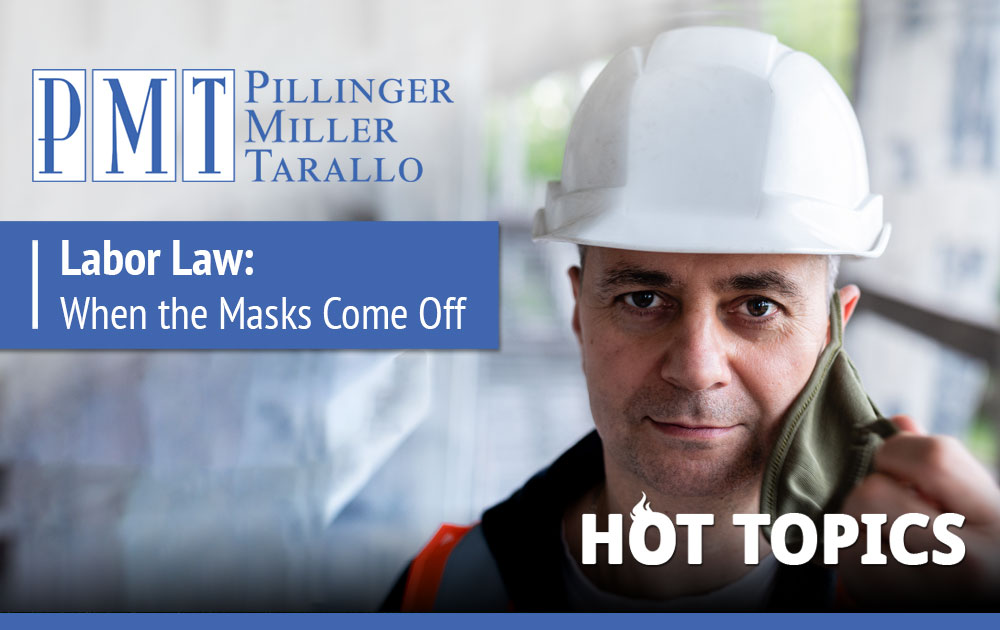When the Masks Come Off, and the Construction Lights Come on; What Employers Should Prepare For.
In the first two days of his presidency, Joe Biden signed several Executive Orders. One Order directed the Occupational Safety and Health Administration (OSHA) to increase enforcement of existing agency standards and investigate whether a new standard for COVID-19 mitigation is needed. In addition, the Secretary of Labor, former Boston Mayor Marty Walsh, is the first union member to be in charge of the agency that oversees OSHA in nearly half a century, creating much anticipation for how stringent new guidelines and inspections may become. In the six months following the directive, the long anticipation for the results of whether further mitigation was needed, and how much inspections would increase, OSHA reported their findings late last week.
OSHA published their Emergency Temporary Standard (ETS) concerning COVID-19 but elected to only concern themselves with employers who provide healthcare and healthcare support services. On June 10th, OSHA explained their limited applicability was from concern that healthcare workers treating patients remain at the highest risk of infection by COVID-19. While the ETS may mean increased compliance and action from healthcare employers, the opposite effect is seen elsewhere. OSHA also clarifies that employers not covered by the healthcare ETS no longer need to implement measures to protect fully-vaccinated workers unless those workers are “otherwise at risk” or unless required by federal, state, local, tribal, or territorial laws, rules and regulations.
On the same day that OSHA issued their highly anticipated Emergency Temporary Standard (ETS) for healthcare employers, the agency also issued another Guidance on Mitigating and Preventing the Spread of COVID-19 in the Workplace, which applies to all other workplace settings not included in the ETS. Per their earlier assertion regarding fully-vaccinated employees, OSHA aimed this guidance at “unvaccinated or otherwise at-risk” employees to aid employers in identifying exposure risks to prevent infection to those employees. While the advice is not binding like the ETS for healthcare employers, employers should still carefully review the contents and implement any additional appropriate measures they deem necessary.
Following the bill’s passage by the New York State legislature, Governor Cuomo signed into law the New York Health and Essential Rights Act, known as the NY HERO Act, on May 5th. The Act amends current state law to mandate the development and implementation of health and safety standards explicitly targeting the spread of all airborne infectious diseases in the workplace in response to the COVID-19 pandemic. While most of the obligations started taking effect earlier in the month, on June 4th, one provision does not take effect until November 1st. Employers must permit their employees to establish a joint labor/management workplace safety committee.
Of the already enacted provisions, one mandates the development of industry-specific Model Workplace Health and Safety Standards for Airborne Infectious Disease. The model standards must consider the types of risks present at the worksite, including the presence of third parties. Another mandates every employer to have an airborne infectious disease exposure prevention plan by adopting the model standard of creating an alternative method that “equals or exceeds” the minimum requirements in the model standard. Other provisions are more stringent, including one that levies penalties. The HERO Act allows the Commissioner, after investigation, to impose financial penalties for failure to comply. Employers who fail to adopt a Prevention Plan may be assessed a civil penalty of not less than $50 a day. For failure to abide by its Prevention Plan, the Commissioner may also assess a fine of not less than $1,000 or more than $10,000. For repeat offenses, civil penalties are increased for violation of the HERO Act more than once in six years. The HERO Act also allows the Commissioner to enjoin a party for violations.
The Act, more importantly, also grants employees a cause of action. Perhaps one of the more notable sections of the HERO Act protects employees from discrimination, retaliation, or any adverse action for reporting violations of the Prevention Plan. This section also allows the employee to refuse to work where the employee “reasonably believes in good faith,” that such work exposes the employee, other workers, or the public to an unreasonable risk of exposure to an airborne infectious disease due to working conditions that are inconsistent with the law, including the minimum standards provided by the model standard, provided that the employer has noticed.
In anticipation of new, more stringent OSHA workplace safety guidelines, employers should continue to invest in providing safety equipment and identifying and eliminating workplace safety hazards at their workplaces. Employers should remain prepared to comply with continuously-updated guidelines and stay consistent with inspections to avoid litigation from greater enforcement efforts.
Should you have any questions, please call our office at (914) 703-6300 or contact:
Marc H. Pillinger, Executive Partner
mpillinger@pmtlawfirm.com
Jeffrey T. Miller, Executive Partner
jmiller@pmtlawfirm.com
